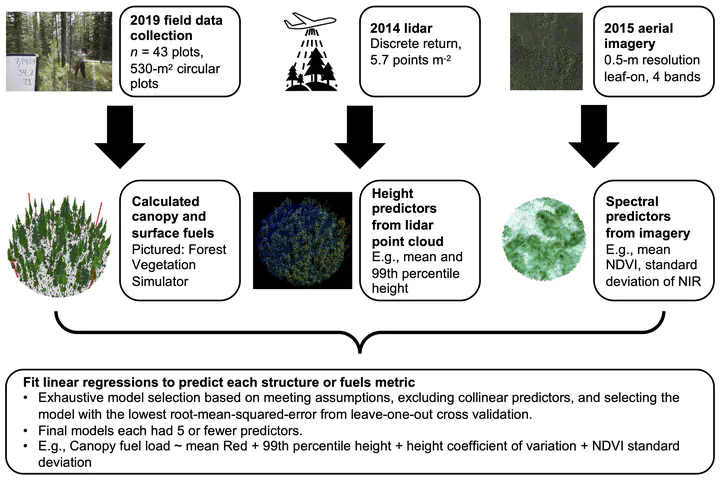Young forests and fire: Using lidar–imagery fusion to explore fuels and burn severity in a subalpine forest reburn

Abstract
Anticipating fire behavior as climate change and fire activity accelerate is an increasingly pressing management challenge in fire-prone landscapes. In subalpine forests adapted to infrequent, stand-replacing fire, self-limitation of burn severity in short-interval fire is incompletely understood. Spatially explicit fuels data can support assessments of landscape-scale fire risk and fuel feedbacks on burn severity. For a ~1450-km2 largely forested landscape in the US Northern Rocky Mountains, we used airborne lidar and imagery to predict and map canopy and surface fuels. In a fire that burned mature (>125-year-old) and also reburned young (~30-year-old) subalpine forest, we then asked: (1) How do prefire fuels and burn severity compare between young and mature forests that burned under similar fire weather conditions? (2) How well do prefire fuels and forest structure predict burn severity under extreme versus moderate fire weather? Lidar–imagery fusion predicted fuel characteristics with high accuracy across forest and shrubland vegetation. Young postfire forests had abundant, densely packed canopy fuels, and both young and mature forests had similar canopy fuel loads and coarse wood biomass. Under similar weather conditions, young and mature forests burned at similar severity. Overall, fuels were weak predictors of burn severity and, surprisingly, better predicted severity under extreme rather than moderate fire weather. Our findings are relevant for subalpine landscapes increasingly dominated by young lodgepole pine (Pinus contorta var. latifolia) forests vulnerable to short-interval fire and provide a benchmark to assess how fuels influence burn severity in future fires. Fire managers should continually reassess fuels and update expectations about fire behavior as landscapes change. Although recovering postfire forests can limit fire spread and severity for a period of time, our results suggest that young subalpine forests in the Northern Rocky Mountains have sufficient fuel loads to burn at high severity and should not be considered effective fire breaks.